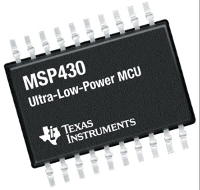Why Mecrisp-Across is AWESOME!¶
Years ago, the creator of Mecrisp, Matthias Koch and I had a little contest to see who could code the smallest ‘Blinky’ for MSP430 in assembly language.
The Tiny Blinky Challenge¶
Challenge: Blinky, binary as small as possible, no strange electrical states on other pins.
My minimal blinky was 80 Bytes
Matthias minimal blinky was 14 Bytes….
Matthias used his Assembly Wizard skills, coupled with a intimate hardware knowledge of MSP430 tricks to get that binary down to 14 bytes in size. I could never achieve that level of hacking.
This Is Why Mecrisp-Across Is Awesome¶
My boring, uninspired, Mecross-Across standard blinky example here used the same kind of technique I used in the original Tiny Blinky Challenge, but instead of three days of Assembly Language Programming/debugging, this time it was 5 minutes of Forth programming.
The size of my Forth Blinky after being compiled by Mecrisp-Across is ONLY 20 BYTES when you subtract the mandatory microprocessor initilisation code that is added at the start of the user code.
The simple fact is that Mecrisp-Across is far, far better at Assembly Language than I will ever be, and at age 64, I don’t see my Assembly Coding skills improving all that much.
Another bonus¶
What’s the difference in the Mecrisp-Across generated binaries of these two blinkies ?
Blinky1¶
: delay ( -- )
65535 0 do loop
;
: minblink ( -- )
1 p1dir c!
begin
1 p1out cxor!
again
;
Blinky2¶
: minblink ( -- )
1 p1dir c!
begin
1 p1out cxor!
65535 0 do loop
again
;
Answer: none, they are both 36 bytes because of the Mecrisp-Across automatic inlining!
Note
Normally Blinky1 would be bigger as the assembler added extra jumps to the delay function.
Why is Saving a Few Bytes So Important Anyway ?¶
Because in the embedded microcontroller world, memory size adds to the per chip price.
Take the latest MSP430FR2000IPW16R chip from https://au.mouser.com, (who are fairly expensive) this chip is only $0.777 in 100 quantity and it’s perfect for lots of small cheap very low power products, but it has only 500 Bytes of FRAM non-volatile storage and 512 Bytes of Ram.
Every Byte counts in embedded electronics!
